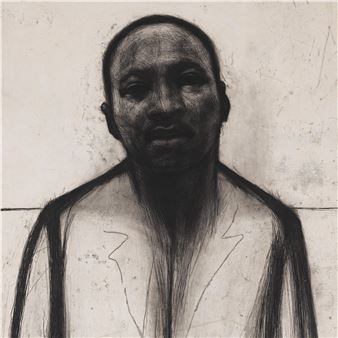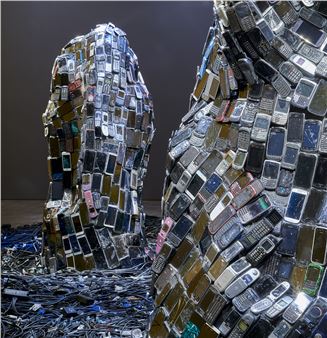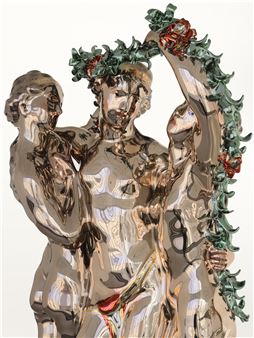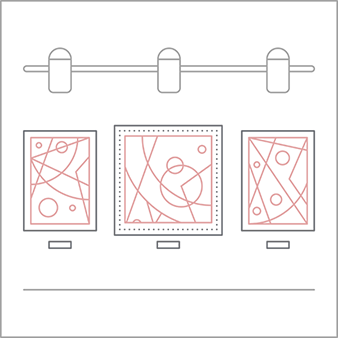Global Connections: Miguel Covarrubias, Isami Doi, Aaron Douglas, & Winold Reiss
Global Connections shines a light on four artists who crossed paths in New York during the 1920s. The city was rapidly becoming a cultural hub that attracted artists from distant states and far-flung countries. Isami Doi moved to New York from Hawaii, Aaron Douglas from Kansas, Miguel Covarrubias from Mexico City, Mexico, and Winold Reiss from Karlsruhe, Germany.
All of these artists were influenced by traveling to other continents and being exposed to cultural differences. They also shared a keen interest in Modernist techniques that introduced new ways of seeing the world, yet their aesthetic styles differed considerably: Covarrubias was primarily a caricaturist of people observed in his travels; Doi made paintings and wood engravings about personal experiences and mythology; Douglas shaped the Harlem Renaissance through socially-conscious African-centric imagery; Reiss incorporated elements of graphic design into realistic portrayals of people whose ethnic identities fascinated him.
Through a selection of paintings, drawings, and prints, the exhibition examines the similar tendencies and unique characteristics of these four remarkable artists. In doing so, it seeks to trace the complicated channels of influence and inspiration within the often-overlooked multiculturalism of American art before the Second World War.

Recommended for you
Global Connections shines a light on four artists who crossed paths in New York during the 1920s. The city was rapidly becoming a cultural hub that attracted artists from distant states and far-flung countries. Isami Doi moved to New York from Hawaii, Aaron Douglas from Kansas, Miguel Covarrubias from Mexico City, Mexico, and Winold Reiss from Karlsruhe, Germany.
All of these artists were influenced by traveling to other continents and being exposed to cultural differences. They also shared a keen interest in Modernist techniques that introduced new ways of seeing the world, yet their aesthetic styles differed considerably: Covarrubias was primarily a caricaturist of people observed in his travels; Doi made paintings and wood engravings about personal experiences and mythology; Douglas shaped the Harlem Renaissance through socially-conscious African-centric imagery; Reiss incorporated elements of graphic design into realistic portrayals of people whose ethnic identities fascinated him.
Through a selection of paintings, drawings, and prints, the exhibition examines the similar tendencies and unique characteristics of these four remarkable artists. In doing so, it seeks to trace the complicated channels of influence and inspiration within the often-overlooked multiculturalism of American art before the Second World War.
Artists on show
Related articles
The Samuel Dorsky Museum of Art at SUNY New Paltz shared details about the exciting new exhibitions that opened in early 2024.

 ARTISTS
ARTISTS
















